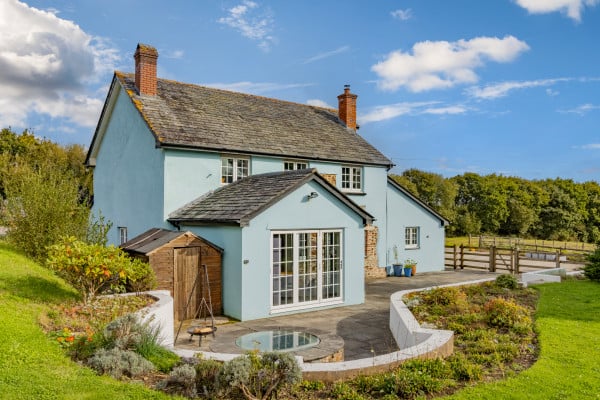What is the Government’s Levelling-up and Regeneration Bill?

With the proposed Levelling-up and Regeneration Bill, the UK government is seeking to bring sweeping reforms to national planning policy. The aim of the Bill is to address the national housing shortage by giving communities more authority over the planning process, as well as shore up the necessary infrastructure to support new developments. As part of a national initiative to reduce environmental and social disparities between parts of the UK, the Bill aims to empower local officials to regenerate their areas, restoring community pride and giving local people ownership over their environments.
The Levelling-up Strategy
The Levelling-up and Regeneration Bill forms part of the government's Levelling-up Strategy, which comprises 12 national missions, ideally to be achieved by 2030. The glaring disparities between various parts of the UKresult in poorer living conditions, shorter life expectancy and more limited economic prospects for those in more disadvantaged areas. The strategy attempts to address these issues and narrow the gap.
These measures endeavour to restore pride of place in local towns and cities, increase employment and job productivity across every part of the UK and improve public transport. In education, the government hopes to see a notable increase in the numbers of primary school children attaining expected levels in reading, writing and maths. Furthermore, the strategy aims to raise levels of mental wellbeing across the country and increase life expectancy.
The Impact on the Housing Sector
The housing sector is facing numerous challenges, especially with the shortage of affordable properties for buyers and tenants alike as well as a lack of suitable infrastructure. The new Bill introduces an Infrastructure Levy, which will be charged on the value of a sold property once it has hit a particular threshold. The levy will be set by local authorities and be based on the value of the property rather than its size.
The aim of this levy is to ensure that developers pay their fair share towards supporting local infrastructure such as roads, GP surgeries and schools, especially as the levy will be deductible once the properties are sold rather than at the outset of a project.
In a wider context, the Bill gives local authorities more control over what is built and where it is built, enabling them to prioritise key areas in the community. This autonomy feeds into the Levelling-up aim to foster local pride, design beautiful structures and safeguard heritage, while protecting the environment.
The Potential Drawbacks to the Bill
While ministers see the Bill as a potential solution to the challenges faced by the housing sector, leading to an increase in more inexpensive, quality housing supported by more robust infrastructure, some organisations remain unconvinced. The removal of current legislations which requires developers to build a certain number of affordable properties on each site has led some to fear that this will result in less social and low-cost housing.
The concern is that when developers no longer have to comply with the regulations to build social housing, the numbers will drop, further exacerbating the housing shortage. Furthermore, some organisations fear that councils would redirect the levies to other areas. However, at this early stage it is too difficult to predict future outcomes.
What Next for the Bill?
The Bill has already been through 15 days of committee stage consultation. The committee stage in the House of Lords allows for line by line check and proposed amendments to the Bill. Most recently, the committee stage has brought forward a number of topics, including but not limited to:
- The establishment of a new bill encompassing devolution and economic growth
- The requirement for new homes to be built with solar panels
- How to support sustainable development and protect the environment
Going forward, the Bill will at some stage go through the Report Stage, although the government has not yet set a date for this. This process is an opportunity for the house to evaluate all the amendments that have been proposed during the committee stage.
Image is from a sold, semi-detached property in Westhill, Inverness. For the full listing, please click here.

A Sit-Down Interview with Emoov CEO Nick Neale
02.12.2025Join us for a sit-down chat with our CEO, Nick Neale, as he shares the story behind Emoov, how the online agency began, and what drives the way we work today.

Why UK Homes Are Becoming More Affordable (And What It Means If You're Selling or Buying)
01.12.2025After years of house prices rising way faster than wages, things are starting to shift. With earnings growing faster than property values for the fourth year in a row, home ownership affordability is finally improving across the UK. But what does this mean if you're thinking of buying, selling, or trying to move up the property ladder? In this blog, we unpack the latest trends and offer practical advice for navigating a more balanced market - whether you’re doing it yourself or listing with Emoov.

Has Your Home Increased in Value? What 2025 Property Prices Mean for Sellers
30.10.2025Homeowners across the UK are asking the same question: has my property increased in value over the last few years? With new figures showing that over a million homes have jumped by more than 50% in value since 2020, it might be time to take a closer look. Whether you're considering selling, remortgaging, or just curious, here's how to understand your home's worth in today's market.
.png)
Emoov Featured in The Glasgow Times: A Low-Cost Way to Buy, Sell & Let Homes
01.10.2025We’re proud to share that Emoov has been featured in The Glasgow Times, in an article spotlighting how our online-first approach is transforming the property market. The piece, published in the paper’s Scotland Today section, explored how Emoov offers sellers, buyers, and landlords a fairer and more transparent way to move home — without the hefty commissions of traditional estate agents.

Is Your Property Listing Breaking the Law?
01.10.2025Since April 2025, new consumer laws mean sellers must disclose more about their homes - or risk falling foul of the rules. If you're selling your own property, it's important to understand what counts as “material information” and how to stay on the right side of the law. This guide breaks it down in plain English - and includes a free checklist to help you get it right.
.png)
Emoov at One Year: A Family Company, A National Presence
03.09.2025In August 2024, Griffin Property Co took a bold step forward: we rebranded as Emoov. A year later, we’re proud to reflect on what has been an incredible 12 months of growth, change, and above all, a renewed commitment to the people we serve.









